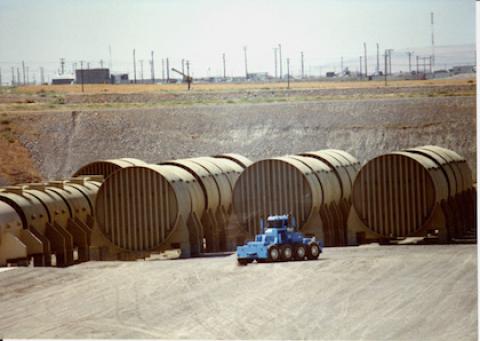Washington state's attorney general said on Wednesday he intends to sue the U.S. government for not adequately protecting workers involved in the decades-long cleanup of a decommissioned nuclear site, saying dozens have been sickened by toxic vapors.
The Hanford Nuclear Reservation, a World War Two-era nuclear weapons site in southeastern Washington, has 56 million gallons (211.98 million liters) of nuclear waste in 177 underground tanks, several with known leaks, according to federal officials.
The U.S. Department of Energy, which owns Hanford, is responsible for cleanup at the site, including the hiring of contractors and workers to extract the waste from tanks for safe disposal.
Washington Attorney General Bob Ferguson said Wednesday the Department of Energy was not doing enough to protect tank workers with dozens reporting illnesses over the past two decades, including 44 over the past 12 months.
"Hanford workers face a very real and immediate health risk," Ferguson said during a conference call Wednesday. "I want these protections now and I want them for the duration," he said.
A study released last month by a panel of independent experts found strong evidence of a causal link between chemical vapors and adverse health effects in tank farm workers and also that the system for measuring such vapors was inadequate.
These health effects have ranged from nosebleeds, headaches, dizziness, nausea, burning skin and increased heart rate to reported long-term disabilities, including permanent loss of lung capacity, the report found.
"Despite the 20 years of study and multiple reports, there is no lasting solution and workers continue to get sick," Ferguson said.
In announcing the intent to file a lawsuit, the Department of Energy has 90 days to respond with a plan of action, he said.
The Department of Energy said on Wednesday it was formulating a response.
The agency on its website calls Hanford "the most challenging" nuclear cleanup site in the country, saying "considerable progress has been made."
Cleanup began in 1989 and is projected to cost almost $115 billion by century's end, according to Environmental Protection Agency estimates.
The 586-square-mile (1,518-square-km) Hanford Nuclear Reservation was established in 1943 as part of the Manhattan Project, the U.S. government program that developed the first atomic bombs.
(Reporting by Victoria Cavaliere in Seattle; Editing by Eric M. Johnson and Eric Walsh)


Spread the word